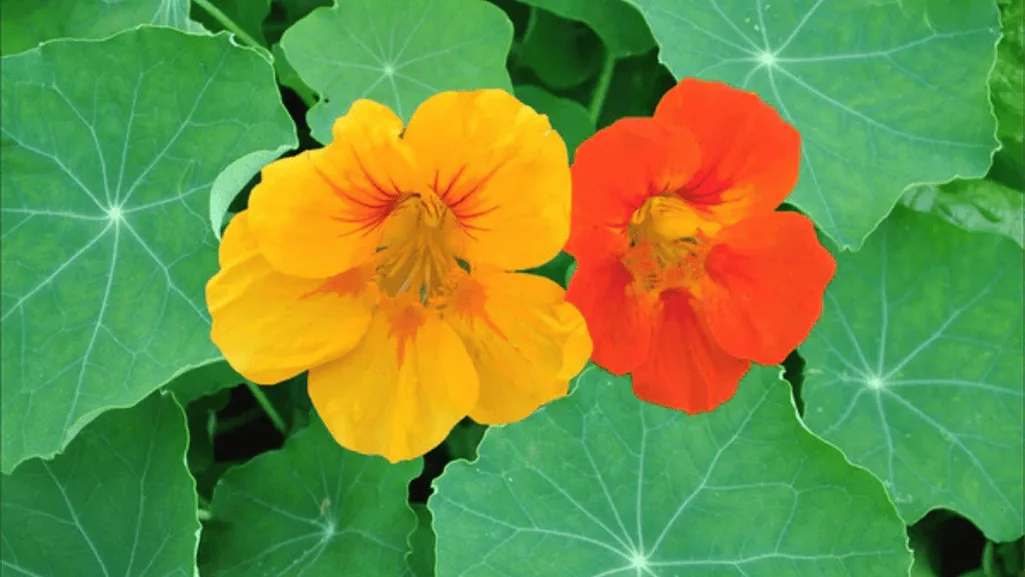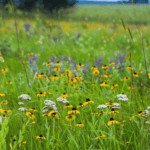
Beautiful flowers gardenia Plants For Your homes

Easy Annuals for Beginners: 5 Fast, Low-Fuss Flowers — Ready to start a vibrant garden fast? This short guide shows five easy annuals that give big color with little work. Plant seeds or set out transplants after your last frost, follow a few simple steps, and enjoy steady blooms through summer.
Sunflowers add height and cheer, zinnias supply nonstop color for bouquets, marigolds deliver reliable warm tones from spring into fall, petunias fill containers with cascading blooms, and sweet alyssum makes fragrant, low edging that ties beds together.
Why these picks work now: they’re forgiving of heat, tolerate average garden soil, and handle uneven rain. They attract bees, butterflies, and birds while requiring straightforward care. Plant where they get the light they need, sow seeds or place transplants after frost, and water gently until roots establish for fast, low-fuss color.
Choose plants that forgive mistakes and reward patience with months of color. These selections suit new gardeners who want quick wins, simple care, and steady results across many U.S. climates — with a note that very cool mountain zones or extremely hot desert pockets may need slight adjustments (more shade, extra water).
Fast starts: Many of these annuals sprout quickly from seeds — you can often see seedlings within a week to two depending on soil temperature and variety. With basic, well-drained soil and regular sun they move from seed to blooms fast, helping beginner gardeners learn key gardening skills.
Long season: Expect blooms from late spring into summer and often into fall if you succession-sow or deadhead where helpful. Varieties like Supertunia Vista petunias and many zinnias perform well with minimal deadheading and routine feeding.
“Pick forgiving plants, follow simple watering, and enjoy reliable color.”
Watch your local last frost date (check the USDA or your county extension) and keep watering steady until plants establish — then shift to deeper, less-frequent watering. Quick tip: find your average last frost date here → USDA tools & local extension.
Smart site choices—light, drainage, and frost timing—make easy garden picks perform well. Match each plant to its sun and moisture needs and you’ll get steady blooms with less fuss. Use the short checklist below to map your beds or containers before planting.
Full sun generally means about 6+ hours of direct light; partial shade is roughly 3–6 hours. Tip: measure light over a few days (note direct sun hours in the morning vs. afternoon) — that will help you place sun-loving marigolds and zinnias where they thrive and put petunias or sweet alyssum where a little afternoon shade softens heat stress.
Prioritize well-drained soil — if water pools after rain, use raised beds or mix in organic matter and coarse sand to improve drainage. Plant after your local last frost date to protect tender seedlings. Keep soil evenly moist while roots establish, then water more deeply and less often to encourage strong root systems.
“Place plants where light fits their needs and you will get more color with less work.”
Plan for wind exposure on tall stems, give stakes where needed, and stagger bloom times across plantings to enjoy continuous color in your garden. For soil amendment and raised-bed how-tos, see local extension guides or search “soil amendment” and “raised beds” on trusted gardening sites.
Sunflowers make an instant focal point in the garden. They suit large back borders and small urban plots alike when you have steady sun, and many varieties tolerate lean or sandy soil that other flowers struggle with.
Size: varieties range from compact types to giants; many common garden cultivars reach 3–10 feet, while specialty giant types can hit 12–16 feet in ideal conditions.
Timing: sunflowers typically bloom in summer (mid-summer to early fall depending on sowing time) and tolerate heat and short dry spells once established.
Direct sow seeds outdoors after your last frost for the best results. Plant seeds about 1/2 inch deep in well-drained soil and thin or transplant seedlings so stems have room — thin to 12–18 inches for single-stem types and 18–36 inches for branching, multi-headed varieties so airflow reduces disease risk.
Tip: leave some seed heads late in the season to feed birds and to enjoy pollinators visiting — sunflowers are a great wildlife-friendly choice that adds color and garden value.
Zinnias reward simple care by producing vibrant flower heads in a wide palette — rich reds, oranges, yellows, pinks, and whites. They’re versatile: excellent in beds, reliable in containers, and among the best easy-grow plants for cutting gardens.
Choose from compact edging types (around 6 inches tall) up to lush varieties that reach near 3 feet. Zinnias are nectar-rich and attract butterflies and bees, which livens up any garden.
Plant in full sun with rich, well-drained soil for the best stem length and brightest colors. Sow seeds 1/8–1/4 inch deep after the last frost; in warm soil they often germinate within a week, though cool conditions can slow that to 10–14 days.
“Cut stems when firm; choose vase-worthy varieties for the best bouquets.”
Marigolds are a go-to annual for beginners: they fill beds and containers with warm golden, orange, and rust tones from spring into fall and tolerate a wide range of soil conditions — including sandy or poorer soils where many other flowers struggle.
Quick facts: sizes run from low 6-inch edge types up to bold 3-foot varieties; they bloom from late spring through summer and often into fall; and they start quickly from seed or transplants.
Plant marigolds in full sun with well-drained soil; sandy patches suit many varieties. Water deeply at planting, then allow the top inch of soil to dry before watering again to avoid root stress — this routine works well through summer heat.
Space plants to promote air movement — compact varieties can be planted 6–8 inches apart, while taller African marigolds do well at 12–18 inches spacing. Deadhead spent blooms for tidier beds and prolonged color, though many modern types keep flowering even without strict deadheading.
“Count on a long season of color with simple care and fast growth from seed.”
Supertunia Vista and similar trailing petunias give gardeners abundant blooms from spring through fall with minimal fuss. They perform well in part sun to full sun, reach roughly 2 feet tall with a 3+ foot spread in favorable conditions, and are ideal for containers, window boxes, and hanging baskets where their trailing habit creates lush coverage.
No deadheading needed for many trailing petunias. Plant in rich, well-drained soil and keep watering steady without letting containers stay soggy. In very hot regions, provide a little afternoon shade to protect blooms from midday stress.
Harden off transplants for 7–10 days before planting out so they tolerate full sun and wind. Use a potting mix designed for containers (rich, well-drained) and water at the soil level to reduce foliar disease. For proven color ideas, see varieties like purple petunias.
A tiny powerhouse for scent and steady bloom, sweet alyssum stays low and spreads wide, making it ideal for borders, containers, and hanging baskets.
These hardy annuals reach about 4–8 inches tall and trail broadly. They perform well in cooler spring conditions and, with steady moisture, continue blooming through summer into fall — in very hot zones give them afternoon partial shade to maintain flower density.
Grow alyssum in well-drained soil in full sun to part sun. For containers and hanging baskets use a light potting mix with good drainage; for in-ground beds amend heavy clay with compost and grit so roots don’t sit wet.
Pollinator friendly: alyssum draws frequent visits from bees and beneficial insects — its sweet scent helps attract pollinators into nearby beds.
“Alyssum is small but mighty — use it to soften edges and add continuous fragrance.”
A side-by-side glance helps you pick sun exposure and sizes that fit beds or containers. Use this quick reference when shopping for seeds or mapping garden beds — it saves time and helps you choose the right varieties for your site.
Full sun: sunflowers, zinnias, and marigolds perform best with strong light and well-drained soil for peak bloom. Sun to partial shade: petunias and sweet alyssum tolerate a little less direct heat and are especially useful in containers, window boxes, and hanging baskets where afternoon shade helps in very hot climates.
All of these easy annuals prefer well-drained soil; zinnias and petunias benefit from a richer mix (add compost) for fuller stems and brighter colors. Want a printable cheat-sheet for the garden or a seed-shopping list? Consider saving this section or printing the page for easy reference when buying seeds and transplants.
Choose direct sow for big, sun-loving types and transplants for faster container fills. For most beginners this gives the best mix of speed and success: sow large-seed sunflowers and many zinnias directly in the garden after your last frost, and set out petunias as transplants for instant container impact.
Petunias often arrive as transplants — Supertunia Vista prefers rich, well-drained soil when planted out. Harden off young transplants for 7–10 days (bring them outdoors for gradually longer periods) so they handle full sun and wind without shock.
Space plants to keep air moving — overcrowding reduces bloom and raises disease risk. Follow seed packet or plant label spacing (see examples below) and map beds to avoid crowded rows.
“Plan timing around frost and soil warmth to give young roots the best start.”
Begin spring by timing sowing for warmth and steady moisture. Wait until after your average last frost before setting out tender transplants or sowing warm-season seed. Keep new plantings watered for the first few weeks — about an inch of water per week is a general guide, but adjust for containers and hot, dry microclimates.
Feed lightly at planting — a balanced starter feed or a small handful of compost helps transplants. For containers, use a potting mix labeled for annuals and follow label fertilizer rates as growth picks up into early summer. Water at soil level to settle roots without wetting foliage.
During summer, water deeply and less often to encourage deep roots. Most of these annuals prefer well-drained soil; Supertunia Vista petunias will keep blooming from spring to fall when given steady moisture and routine feeding.
In fall, keep watering during dry spells, tidy spent stems, and leave a few seedheads for wildlife. Remove frost-damaged annuals at season end and add healthy debris to compost to prep beds for next year.
Bring garden color indoors by harvesting stems that are firm and show good form. Sunflowers and zinnias are the most reliable cutting choices for bold bouquets; cut in the morning and condition stems in cool water for best vase life.
Both plants love full light and steady fertility so stems stay sturdy. Zinnias perform best in rich, well-drained soil; sunflowers tolerate leaner soils but will often show better size with a bit of compost worked into the topsoil.
“Condition stems in cool water for several hours before arranging for best longevity.”
Close out this guide by choosing easy-grow annuals that give instant color and teach simple habits. Start a small flower garden with sunflowers, zinnias, marigolds, petunias, and sweet alyssum for quick wins.
Next steps: Match light and soil, space for airflow, and water while roots form. Try a beginner combo (1 sunflower, 4–6 zinnias, a cluster of marigolds, a petunia container, and alyssum edging) to cover beds and containers with varied height, color, and continuous blooms.
Choose sunflower, zinnia, marigold, petunia, and sweet alyssum. These thrive in full sun or part sun, suit beds and containers, and offer long bloom times with minimal pest trouble.




